Welcome all to the first of the Fandomentals’ articles covering the new show, The Last of Us, starring Pedro Pascal and Bella Ramsey.
Some readers may remember me from my deep, intense over-analysis of Game of Thrones on Unabashed Book Snobbery, my articles on the last season of Supernatural, and my current work pressuring Kylie and Julia to finally watch House of the Dragon. I’m also an avid gamer and long-time fan of The Last of Us game series.
And so I’ve been waiting with bated breath for the premiere of the television adaptation of one of my favorite series, starring two actors from the last adaptation that so severely disappointed us all.
But good news: The Last of Us show, at least this first episode, was solid!
So let’s review the plot and get into that wonderful over-analysis we all know and love.
SPOILERS for the SHOW up through EPISODE 1 and for the GAME up through the plot covered in EPISODE 1
The Last of Us: Episode 1 “When You’re Lost in the Darkness” Plot Summary
Our pilot episode begins with a scene set in 1968, where two doctors describe the dangers of mass disease. This is especially interesting considering that the real-world population watching this show has just lived through the type of pandemic – how the writers handle that strange meta narrative throughout this show will be something to track. One doctor provides some excellent world-building that is absent from the games: that a fungal infection would be unstoppable if, and only if, fungus evolved to live inside warmer hosts, like mammals. The doctor proffers that there’s no reason for a fungus to do that unless, perhaps, it must evolve because the world gets warmer.

Fast-forward to 2003, and it’s Joel Miller’s (Pedro Pascal’s) birthday! Everything we see reads disheveled dad – he oversleeps his alarm, his room is a mess, he puts his shirt on inside-out. The director uses the screen to tell us that story without explicating it in dialogue, and to good effect.
Sarah (Nico Parker), Joel’s teenage daughter, exposits at the breakfast table that Joel is now 36-years-old. Thank you for the time stamp, dialogue! Needed that one! It’s also made clear through Nico Parker’s excellent performance that Sarah is a lovely kid. That’s a nice daughter Joel’s got there – I certainly hope nothing happens to her.
The camera follows Sarah throughout her day, specifically to a shop where she takes her dad’s watch to be fixed for his birthday. During these mundane scenes we hear various newscasts on radios and TVs that something strange is going on elsewhere in the world. Sarah gets kicked out of the shop abruptly and is told to go home. She sees fighter jets fly over her hometown – Austin, Texas.
Sarah goes to visit her neighbors and their very adorable, definitely-not-haunted elderly grandmother, who sits silently in a wheelchair and stares into the middle distance.
And oh yeah, she does this.
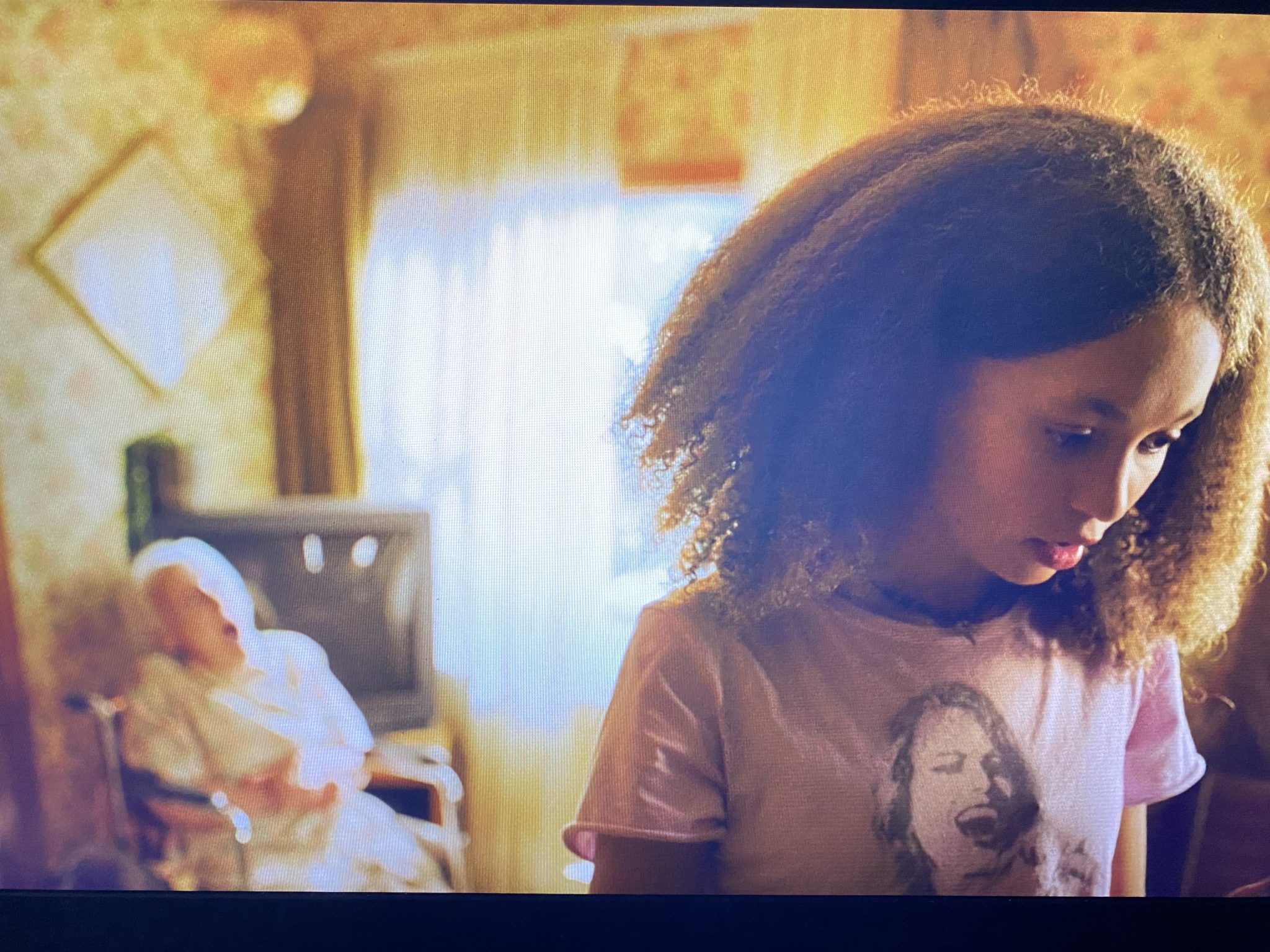
This is one of two really excellent shots of the episode – Sarah in the foreground, grandma in the background having horror-television-show convulsions out-of-focus. While the game series itself is more action-oriented, I am hopeful they lean into some of these horror moments throughout the show.
Interestingly, the family dog seems aware that something is wrong with grandma. Animals aren’t used like this in the game – will this be an element that is used later on? It could make the presence of dogs infinitely more interesting narratively!
That night, all hell breaks loose as the presence of the mysterious infection becomes widely known. Sarah is awoken at home, alone, and realizes the neighbor’s dog is scratching at her door. When she goes to her neighbor’s house to see what’s up, oh no! Grandma is a zombie and eating people! Yikes!
Joel and Tommy (Gabriel Luna), Joel’s brother, arrive just in time to save Sarah. Joel presses square and hits zombie grandma clean across the face with a wrench, killing her.
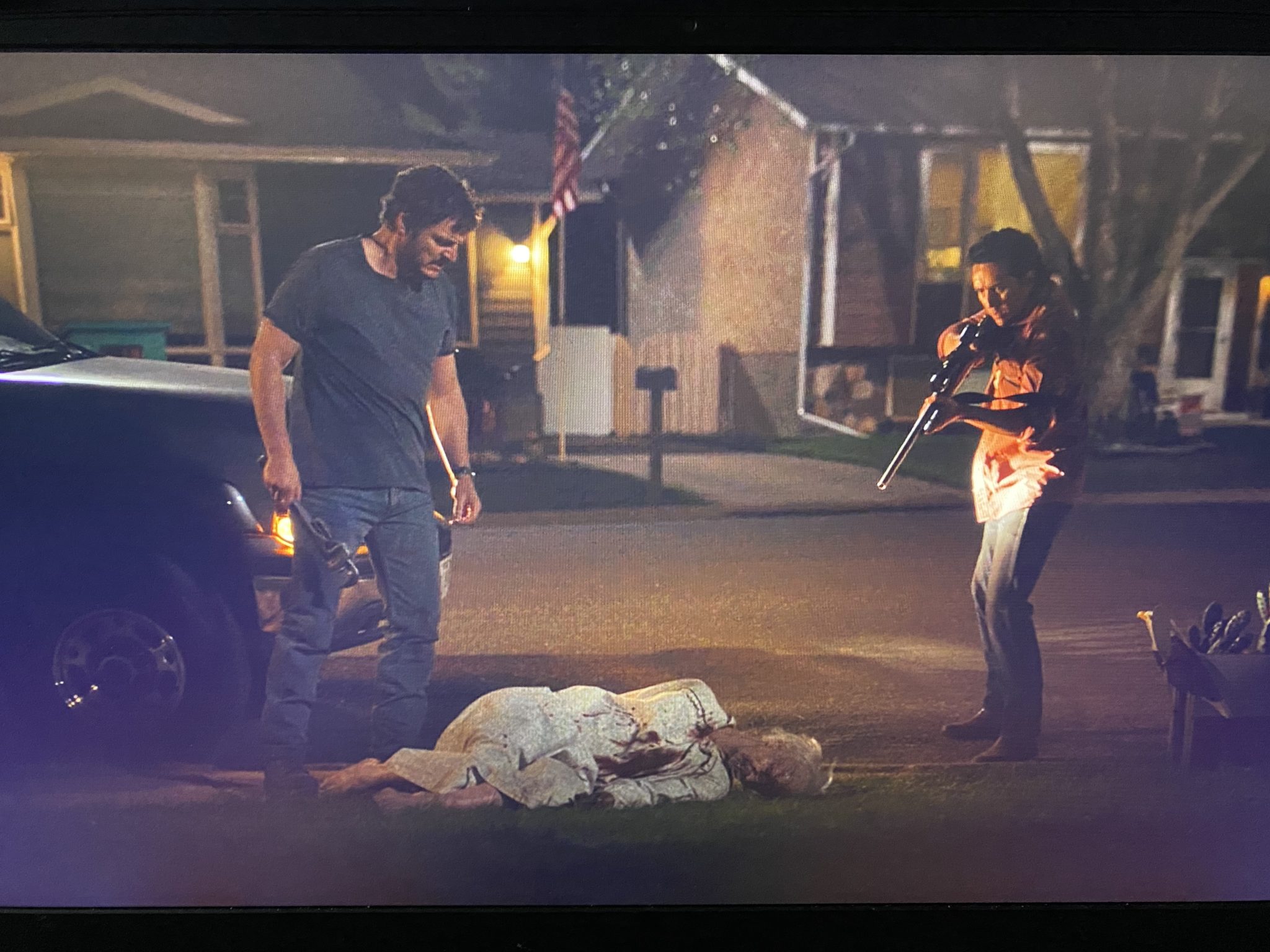
Joel, Tommy, and Sarah flee the neighborhood but get caught up with the wild crowds in the city. We’re shown multiple people who are “sick” per the dialogue, who have strange small vines or tentacles coming out of their mouths. The “sick” people are seen chewing at the faces and necks of other people.
In the chaos, Sarah is injured. Joel tries to carry her to safety when they encounter a fully-armed soldier. The soldier gets orders over his radio to shoot Joel and Sarah. Joel tries to dodge, but Sarah is mortally wounded and dies in his arms. Damn, are the zombies the monsters, or are people, truly, the real monsters? I just can’t tell.
Sarah dies about 35 minutes into the episode, and then we time-skip to twenty years into the future (2023 – uh oh, wait a minute…). In the post-apocalyptic zombie universe, Joel is living in a run-down area of Boston that is walled-off and patrolled by military-style government dudes. We learn that Joel is trying to get a car battery so he can drive out to Wyoming in search of Tommy, because it seems his brother is missing. In this process Joel relies on Tess (Anna Torv), who is helping to secure the battery from a black market trader.
Simultaneously, the audience is given a few short scenes with a girl named “Veronica” (Bella Ramsey) who is chained up in a room. It’s obvious from the interactions that Veronica is important, but it is unclear why, and Veronica herself does not seem to know.
The show also provides some explication on the Fireflies, a “resistance group” within the “QZ” (quarantine zone) that has been attacking the military. The Fireflies have existed for over two decades, per the Firefly leader Marlene (Merle Dandridge). Marlene also reveals that “Veronica” is really Ellie, and that the Fireflies need to move Ellie west and away from Boston.
Damn, if only I knew a smuggler with no ties to this community, nothing to lose, and a whole lot of guns who also wanted to go west and get out of Boston. Shucks!
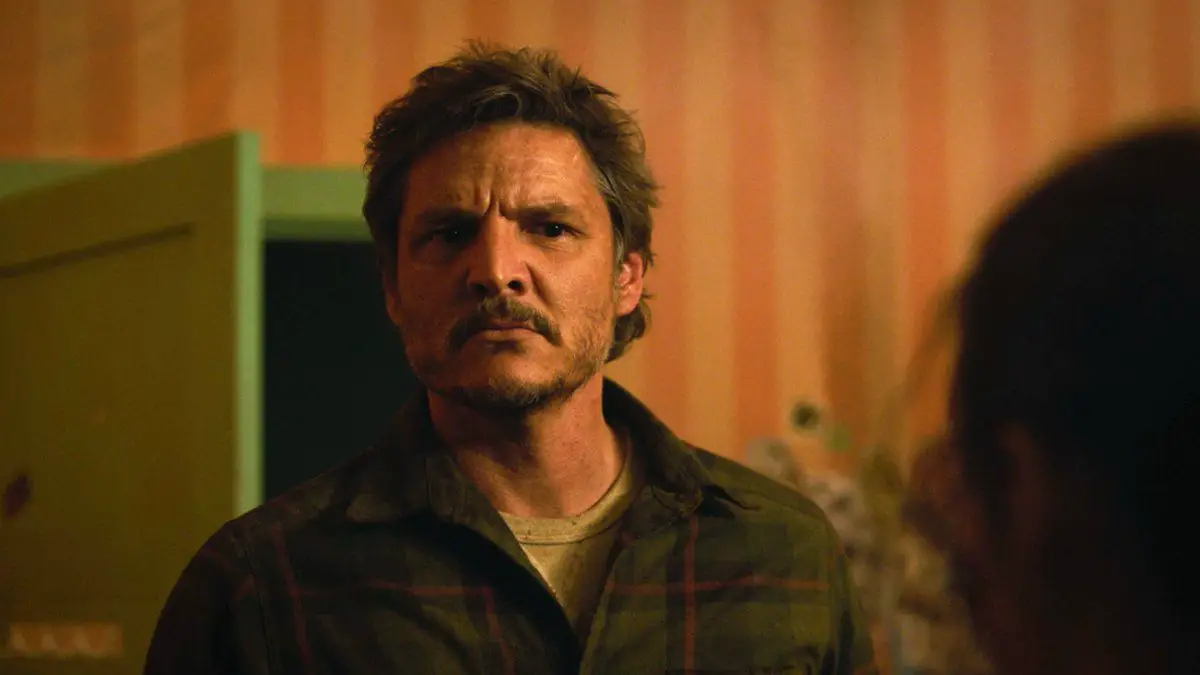
Ultimately Joel’s and Ellie’s stories intertwine, and he agrees, along with Tess, to transport Ellie to the next location which is just outside the QZ. In the final scenes the three are caught by a military patrol outside. They try to bribe the patrolman, but he scans Ellie for the virus discovers she is infected. With the rain pouring down, lightning flashing, the soldier points his gun and flashlight directly at Ellie and Joel.
This is the second beautiful sequence in this episode – we are shown the gun and flashlight from Joel’s point of view in the present time. As a viewer, I immediately remember the same way the soldier pointed the gun at Joel in the beginning of the episode. The screen then cuts quickly to that flashback, showing us that Joel remembers it too. Joel then rushes the officer and beats him to death. With Joel in the foreground murdering this guy, Ellie is visible in the background, in-focus, hunched over, almost feral, watching the violence with wide and intense eyes. We can see that she is drawn to this violence.
The episode ends with Ellie quickly explaining that she’s not infected. She shows her arm to Tess and Joel, and the camera gives us a quick glimpse of some distorted skin. Ellie says this happened “weeks ago” and she’s not infected. The three run off into the rainy night.
Analysis and Critique
As a fan of this and many horror games, as well as someone who is wildly critical of adaptations to the screen, I must admit I am impressed by this pilot episode. I found it followed logically, created a consistent and coherent narrative, and kept my attention – even though I know intimately what is coming next. All the actors did well, and both Pascal and Ramsey have sold me on Joel and Ellie (we’ll see if that continues!). I have watched the episode multiple times already, and I will watch it again, and enjoy it again for sure.
All that said, it is a television adaptation from a video game series, so I have some concerns.
Part of the problem with giving this episode too much harsh critique is that it is the pilot. By its nature, it is going to lack some elements we look for in our excellent episodes of TV. For example, the dialogue writing was perfectly average. It was maybe slightly above average. But there weren’t any lines that took my breath away, or really made a big impact. It was normal dialogue, used to tell a normal linear story.
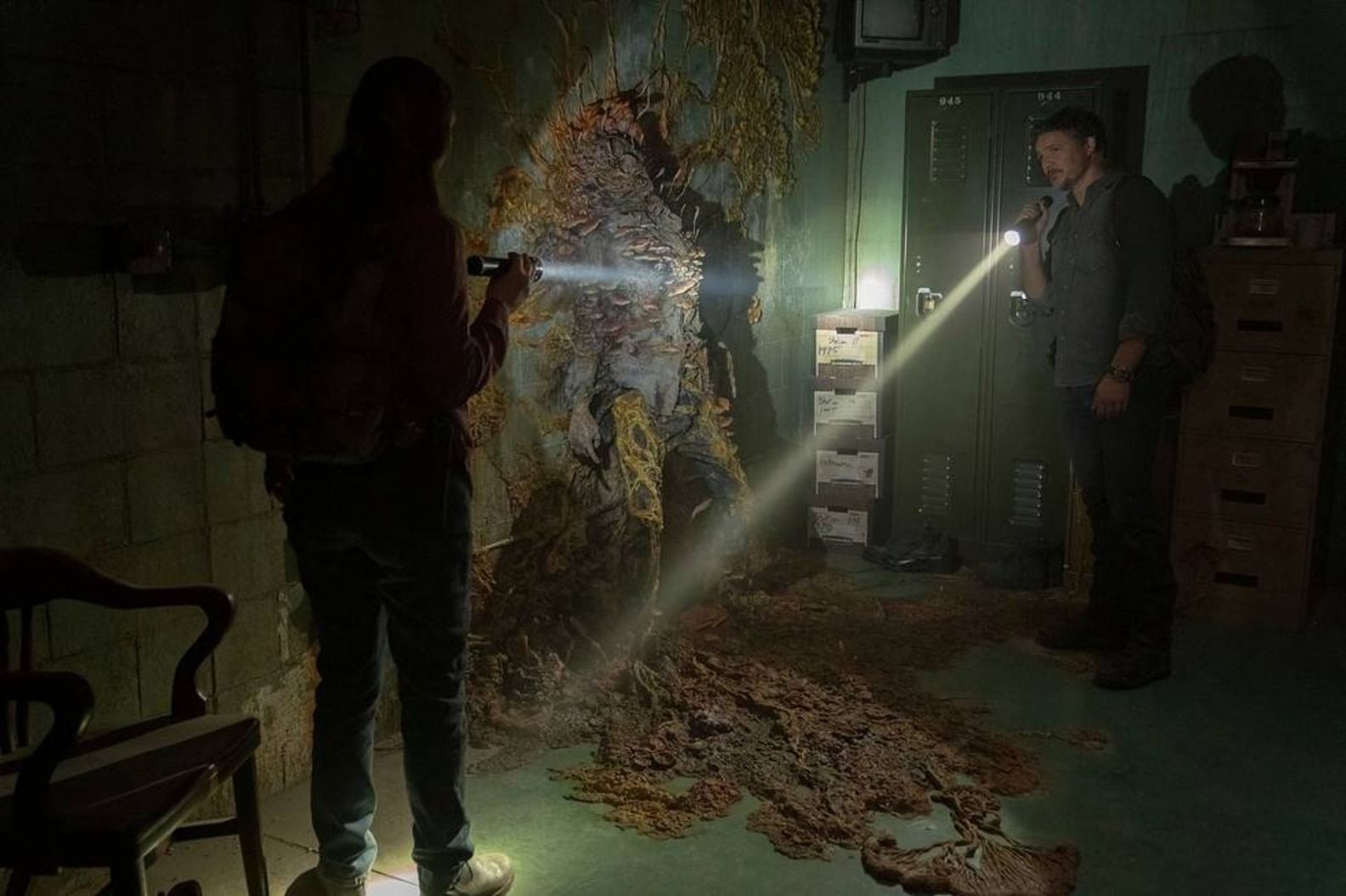
My other primary issue with this show will undoubtedly be ongoing – it’s an adaptation from a source that is itself flawed. The Last of Us Part I and II, the two games so far in the series, have lots of positives going for them – but also lots of giant narrative holes you can drive a truck through. The game plots suffer from generic writing and storytelling, stereotypes, and overall predictability at times. Exploring all of those are outside the scope of this article, but as they come up in the show, I’ll review them.
In this episode, for example, they adapted very closely the beginning of the game, particularly with Sarah’s death. Okay, so that makes it a good adaptation, right? I suppose technically yes. But Sarah’s death in the game was silly anyway. You’re running from the hordes of science fiction zombies and you die from what, a gunshot? From a soldier? Why, because your theme is that “people are the real monsters”? Literally every zombie game, show, or movie has that theme. It’s boring, it’s tired, it’s been done. Maybe in 2013 when Part I came out it was at least a little bit novel – but even then we already had Dead Rising, all the Resident Evil games, and The Walking Dead, to name a few. Sarah’s death was extremely predictable in The Last of Us Part I, and remains so in the adaptation. The mechanism of death – being shot by a person – also remains overdone.
I’m also wary of gamers filling in gaps in the narrative plot with game-knowledge. This is a TV adaptation. The writers need to make this stand on its own without prior game knowledge. And for the most part, so far, I think they are successful. There are two really important things, though, that as of this episode are wildly unclear.
First, Joel’s watch. Any good gamer knows that Joel’s watch is Thematically Significant ™ because Sarah gave it to him, and it was damaged the night she died. Specifically, there are bullet holes on the glass from when the soldier shot at them. Joel’s watch exists in the show as well – we see when Sarah gives it to him, and an astute observer can see that it is damaged just after their encounter with the soldier.
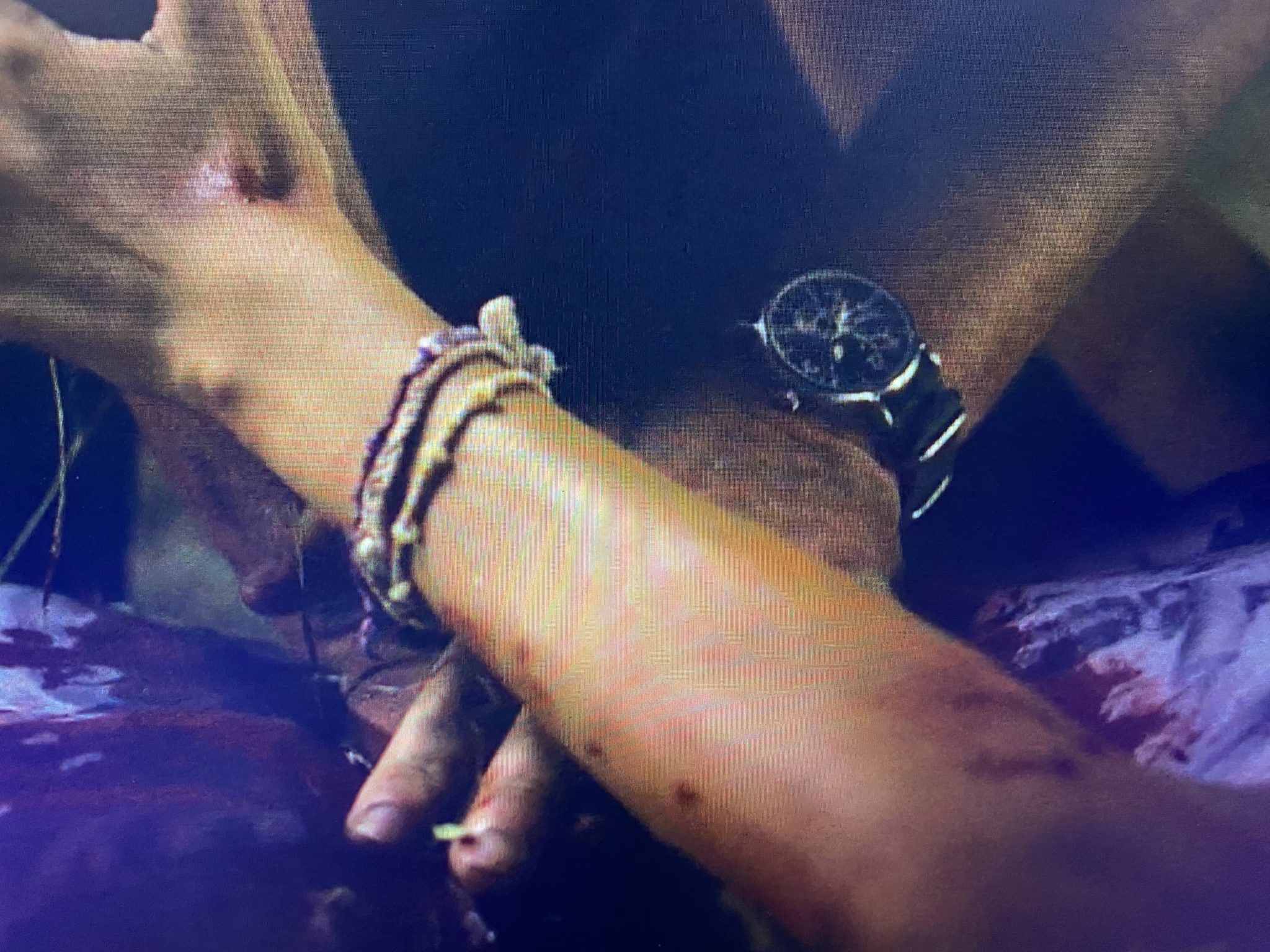
However, there is no additional visual or dialogue storytelling to highlight this for the audience, and it is a really easy detail to miss. This is unfortunate, because the reason the watch has any Thematic Significance ™ is because it is damaged at that specific moment.
It’s possible they can fix this in later episodes, but really it belonged in this one, the episode where we see Sarah die. Otherwise it will lose emotional significance for the audience.
Another example is Ellie’s bite. In the very last lines of dialogue, Ellie shows her forearm to Tess and Joel. Game-players recognize this immediately: where Ellie was bitten by an infected. But all Ellie says in dialogue is “this” happened three weeks ago, and she’s not sick. Ellie doesn’t use the word “bite” or say “I was bitten”, or anything descriptive. This may seem like a nit pick, but this is extremely important information to make very clear to your audience. It is vital that everyone understands that Ellie was bitten, she did not turn, therefore she is immune and highly valuable. The visual storytelling was there, but without the accompanying explanation, it is unclear at best and at worst, confusing. This is especially true give that we have not been shown any other bite marks, nor have we seen zombies attack anyone in other places besides the neck and face.
There were also two scenes that could have been cut entirely from this episode. The first is the random child who emerges from the woods. Now, I consider myself a pretty astute member of the audience – I’ve both played these games AND I do media analysis regularly – and I was wildly confused by this. Who is this kid? Was that Ellie? No, so who is it? The machine light is red, what does that mean? We hadn’t seen the machines before in the episode. The dialogue says the child is getting medicine and new clothes. The poster says you go zombo pretty quick after infection. The kid isn’t zombo yet, so is he not infected? What is happening? This scene gave pretty much no good information, and only confused me.
The other scene, which I learned later from internet discourse was the accompanying scene to the first one, was when Joel is burning bodies. Apparently the body of the child he burned was that child in the first scene. If that was a Jeopardy question, I would’ve lost that round, I did not follow that connection at all. In this scene a woman who is also burning bodies refuses to burn the body of the child, so Joel does it. Um okay, what? Why? I assume the script was trying to characterize Joel in some fashion, but what is that characterization? He doesn’t like kids now? This dead child doesn’t remind him of his dead daughter? Or was it that the woman couldn’t burn a kid, because of her Womb Syndrome ™? Not a great look, not a good use of our screen time.
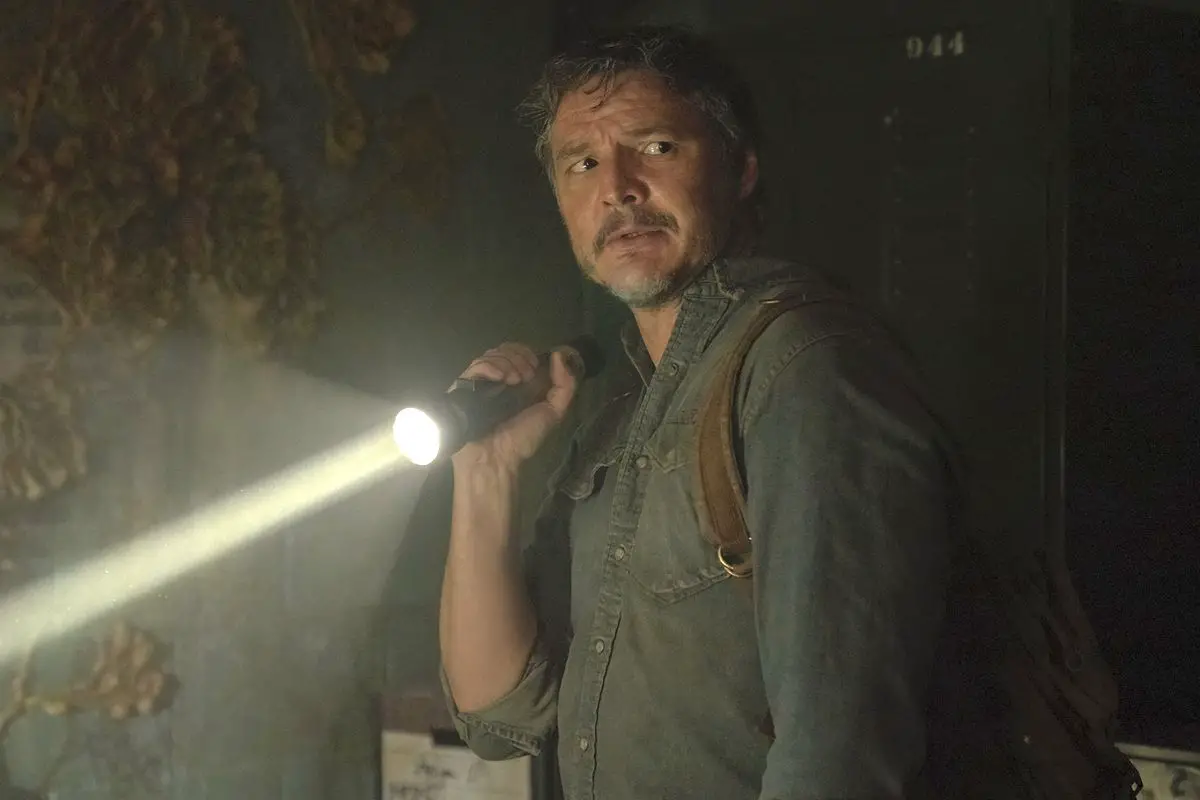
My last concern overall for this show is pacing. Episode 1 was paced VERY WELL – action items happened at good intervals, it told the story it needed to, and I felt the momentum of the plot. However, word on the internet grapevine is that Season 1 is slotted to end when Joel and Ellie reach the end of Game 1. If that is true, I am concerned that will be disastrous for pacing. It’s not impossible – maybe these writers will pull it off, who knows – but I do not think about 10 hours of TV is enough time to tell the story of The Last of Us Part 1. And of course, this pacing decision will have a direct impact on a possible Season 2. You could call it a direct blunt-force impact with a golf club, even!
Overall, this was a solid, bordering on good episode of television. On my completely arbitrary and personal scale of television ratings, I dub this episode a 6.5 out of 10.
Check back next week for a review of Episode 2: “Infected”
If you’re interested in more The Last of Us content, check out my TikTok @beelock where I play through the games on Live and also host a Live chat after each episode every Sunday night.
Images courtesy of HBO Max
Have strong thoughts about this piece you need to share? Or maybe there’s something else on your mind you’re wanting to talk about with fellow Fandomentals? Head on over to our Community server to join in the conversation!

